
10 Ajaw 8 Muwaan: Drawing by Jorge Pérez de Lara
Seeking Balance in Quetzaltenango: Jun B’atz’ and Jun Chowen and the Art of Writing
Happy New Year! As we enter this new decade, as reckoned by the Gregorian Calendar, we must remember that this system of reckoning time is but one among many other systems, and that the sophisticated calendrical system of the Ancient Maya was used for far longer than that which we use today. While it was nearly lost, thousands of Maya people speaking many different Mayan languages are now relearning how their ancestors reckoned time and recorded their histories using their unique writing system. We are very excited to ring in this new and hopeful decade by supporting the upcoming Fifth International Congreso on Ancient Maya Writing this August in Comitán, Chiapas!
This month, we hear from our close friend, Ajpub’ Pablo García Ixmatá, one of the integral members of the Congreso Organizational Team. Last September, working together with the Asociación Qajb’al Q’ij and Rafael Landivár University, Ajpub’ organized a workshop in Quetzaltenango, Guatemala for 35 men and women from no less than eight different Mayan language communities in Mexico and Guatemala—all of them leaders in their respective communities.
In his workshop, Ajpub’ explored the meaning of Jun B’atz’ and Jun Chowen, the monkey brothers from the Popol Vuh, and how they represent the uniquely Maya relationship between writing and art, emphasizing the importance of maintaining a balance between these things in the development of human character.
We look forward to working with Ajpub’ and the Congreso Organizational Team in the coming months as we begin our fundraising efforts for this historic event, as well as to continue our program of Mini-grants for the New Year.
As always, thank you for your ongoing support, and we hope that you all have a prosperous and peaceful New Year.
Sib’alaj Maltiyoox,
Michael Grofe, President
MAM

Ojeer Maya’ Tz’ijb’
Introduction to the writing and system of the Ojeer Maya’ Tz’ijb’
Municipality of La Esperanza, Quetzaltenango
September 18 and 19, 2019
Workshop facilitator: Ajpub’ Pablo García
Description:
For two days an International Workshop of Introduction to the Maya writing system, Ojeer Maya’ Tz’iib’, was held with a group of Maya leaders, men and women who speak the following languages: Tsoltsil, Tseltal, and Mam from Chiapas, Mexico, and Mam, Awakateko, Chuj, Q’anjob’al, Kaqchikel, and K’iche’ of Guatemala. This activity was carried out in coordination with the Qajb’al Q’ij Association for Intercultural Education and Development, and Rafael Landívar University.
The main objective of the group: Rescue the ancestral knowledge and practices from the Ojeer Maya’ Tz’ijb’ and the 260-day Calendar to help people who seek peace and the creation of spaces to discern and develop comprehensive training in Maya villages.
Within the same dynamics of the workshop, the relationship between Jun B’atz’ and Jun Chowen was discussed in depth with the art of writing, drawing, carving, painting and singing and their relationship with the persona to seek balance.
During the two days 35 people participated, of the 40 guests invited.

10 Ajaw 8 Muwaan: Dibujo de Jorge Pérez de Lara
Buscando el equilibrio en Quetzaltenango: Jun B’atz’ y Jun Chowen y el arte de escribir
¡Feliz año nuevo! Al entrar en esta nueva década, según el calendario gregoriano, debemos recordar que este sistema de cálculo del tiempo no es más que uno entre muchos otros sistemas, y que el sofisticado sistema calendárico de los antiguos mayas se usó por mucho más tiempo que el que usamos hoy. Si bien este sistema de escritura estaba casi perdido, miles de mayas que hablan diferentes idiomas mayas ahora están volviendo a aprender cómo sus antepasados calcularon el tiempo y registraron sus historias utilizando su sistema de escritura único. ¡Estamos muy emocionados de recibir en esta nueva y esperanzadora década apoyando el próximo Quinto Congreso Internacional sobre Escritura Maya Antigua este agosto en Comitán, Chiapas!
Este mes, escuchamos a nuestro amigo cercano, Ajpub’ Pablo García Ixmatá, uno de los miembros integrantes del Equipo Organizacional del Congreso. En septiembre pasado, en colaboración con la Asociación Qajb’al Q’ij y la Universidad Rafael Landivár, Ajpub’ organizó un taller en Quetzaltenango, Guatemala para 35 hombres y mujeres de no menos de ocho comunidades de lenguas mayas diferentes en México y Guatemala, todos ellos líderes en sus respectivas comunidades.
En su taller, Ajpub’ exploró el significado de Jun B’atz’ y Jun Chowen, los hermanos monos del Popol Vuh, y cómo representan la relación singularmente Maya entre la escritura y el arte, enfatizando la importancia de mantener un equilibrio entre estas cosas. en el desarrollo del carácter humano.
Esperamos con interés trabajar con Ajpub’ y el Equipo Organizacional del Congreso en los próximos meses a medida que comenzamos nuestros esfuerzos de recaudación de fondos para este evento histórico, así como para continuar nuestro programa de Mini-subvenciones para el Año Nuevo.
Como siempre, gracias por su continuo apoyo, y esperamos que todos tengan un próspero y pacífico Año Nuevo.
Sib’alaj Maltiyoox,
Michael Grofe, Presidente
MAM

Ojeer Maya’ Tz’ijb’
Introducción a la escritura y sistema del Ojeer Maya’ Tz’ijb’
Municipio de la Esperanza, Quetzaltenango
18 y 19 de septiembre 2019
Facilitador del taller: Ajpub’ Pablo García
Descripción:
Durante dos días se realizó el Taller (Internacional) de Introducción sobre el Ojeer Maya’ Tz’ijb’ con un grupo de líderes y lideresas maya hablantes de los idiomas: Tsoltsil, Tseltal, Mam de Chiapas, México, y Mam, Awakateko, Chuj, Q’anjob’al, Kaqchikel, y K’iche’ de Guatemala. Actividad realizada en coordinación con la Asociación Qajb’al Q’ij para la educación intercultural y desarrollo, y la Universidad Rafael Landívar.
El objetivo principal del grupo: Rescatar los conocimientos y prácticas ancestrales desde el Ojeer Maya’ Tz’ijb’, el Calendario de 260 días, esto para ayudar a las personas que buscan la paz y la creación de espacios donde discernir y desarrollar la formación integral desde los pueblos mayas.
Dentro de la misma dinámica del taller se habló a profundidad sobre la relación de Jun B’atz’ y Jun Chowen con el arte de escribir, dibujar, tallar, pintar y cantar y su relación con la persona para buscar el equilibrio de la persona.
Durante los dos días participaron 35 personas, de las 40 personas invitados. Continue reading


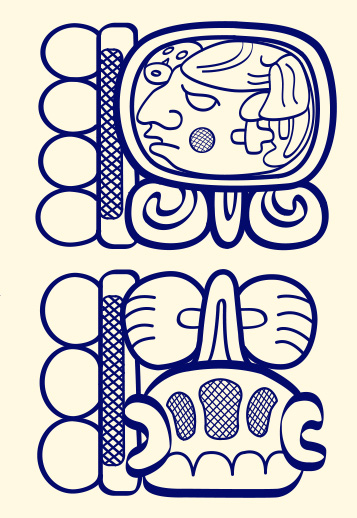


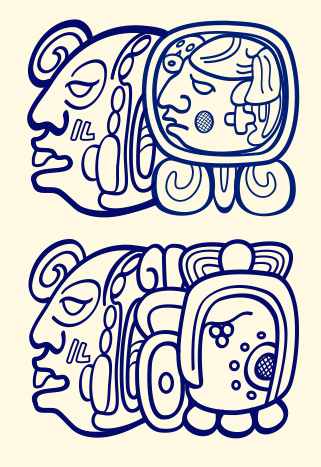

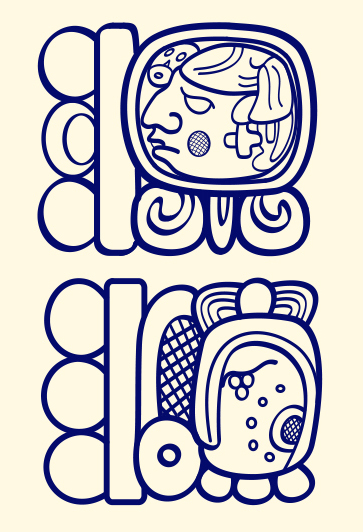


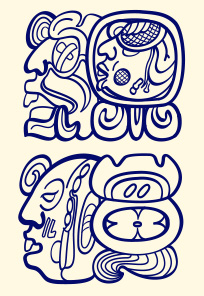

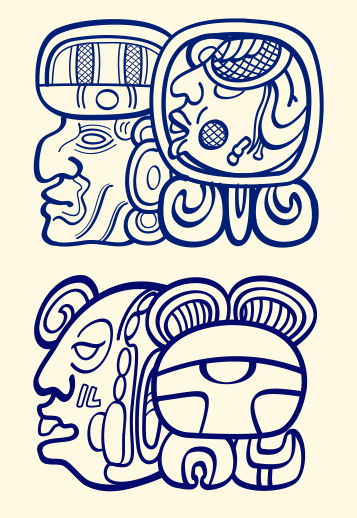

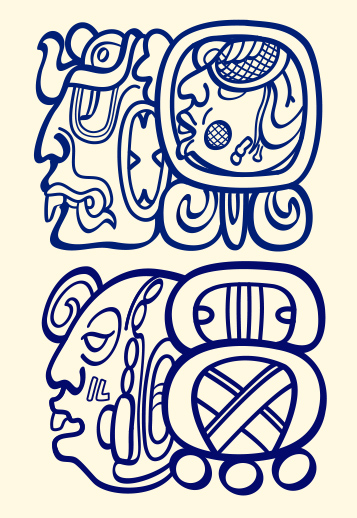



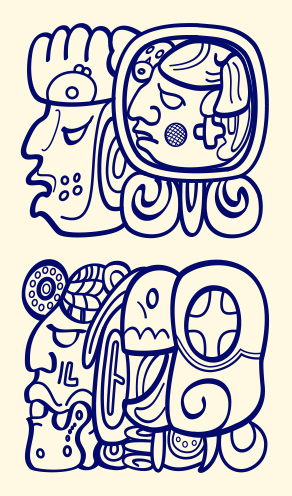

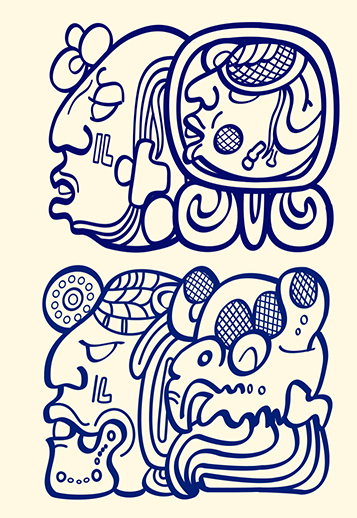
 Recognition of the cultural and epigraphic development of Becán
Recognition of the cultural and epigraphic development of Becán